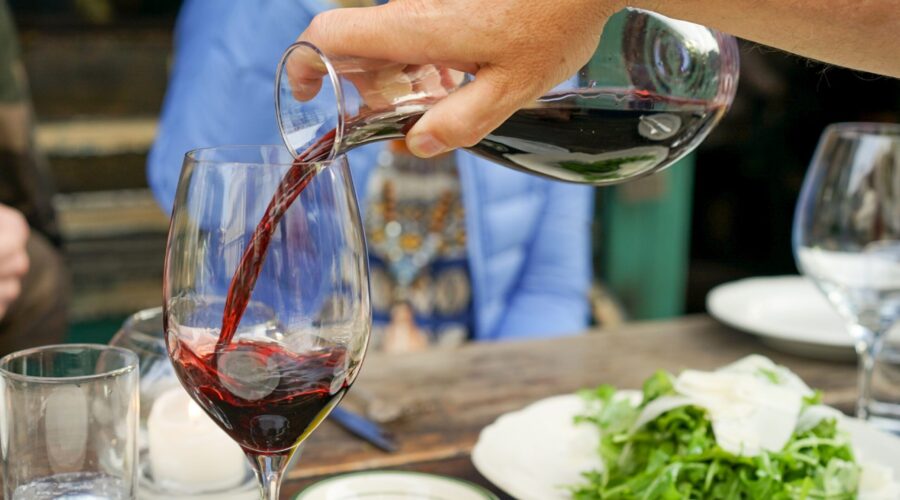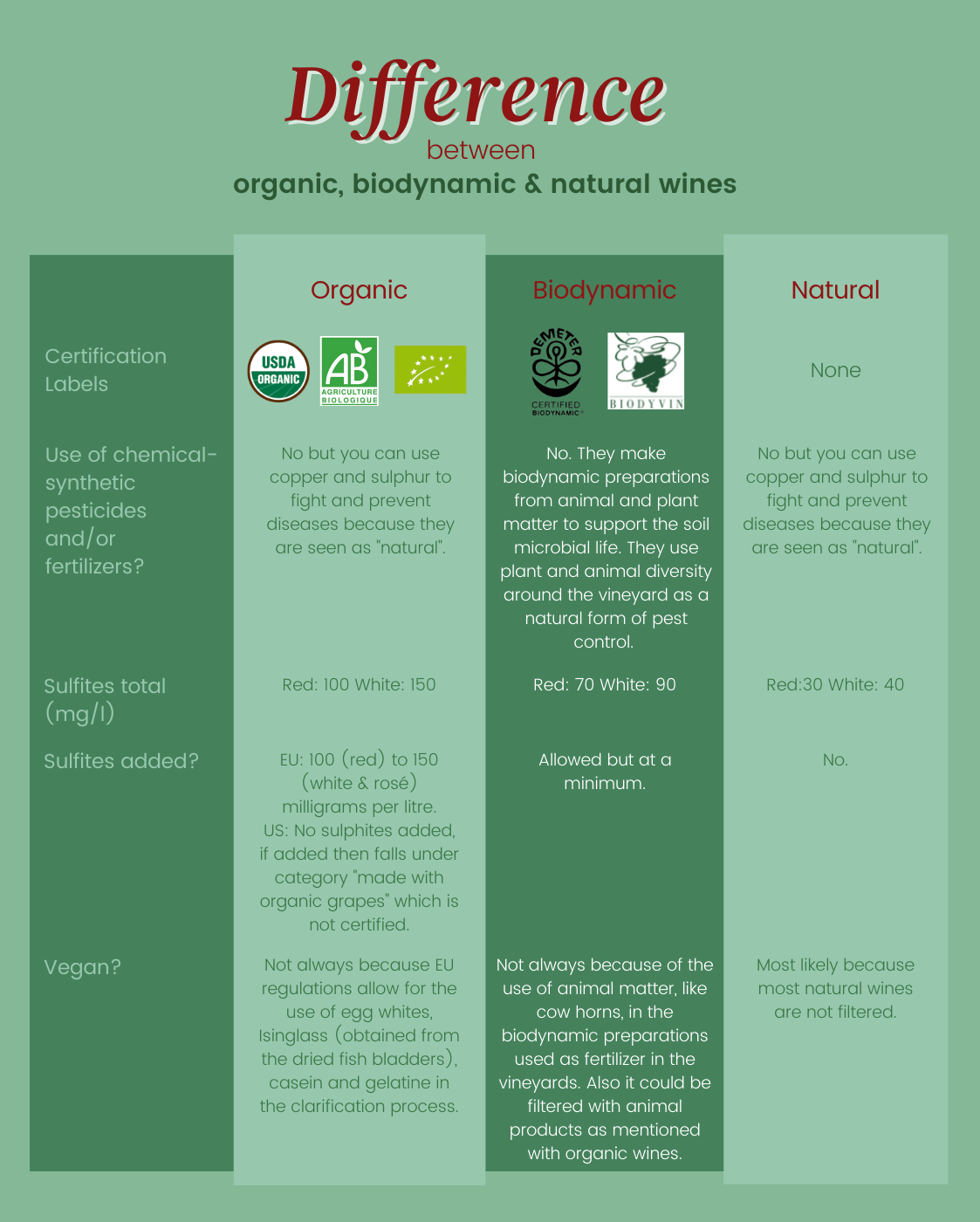© Good Travel Guide, June 2021
Author: Ramona Mendis, Infographic Designer: Anastasiia Korshunova
The earliest evidence of wine making dates back to more than 8,000 years ago in southern parts of Tbilisi in Georgia.
[efn_note]BBC News. “’World’s oldest wine’ found in 8,000-year-old jars in Georgia.” BBC NEWS, 13 November 2017. Accessed 17 April 2021.[/efn_note]
Wine growing (viticulture) and wine making (viniculture) are a centuries old tradition. It is seen in many parts of the world to be a large part of their heritage and culture, similar to gastronomy. When discovering a destination, part of the experience is indulging in the local gastronomy, which is sometimes paired with a nice (local) glass of wine! There is a term used to describe the wine side of tourism which encompasses “visiting vineyards, wineries, tasting, consuming and/or purchasing wine, often at or near the source” and this is called “Eno-tourism”.
[efn_note]United Nations World Tourism Organization. “United Nationals World Toursim Organization” GASTRONOMY AND WINE TOURISM. Accessed 15 May 2021.[/efn_note]
As with all types of tourism it is important to understand how sustainable this type of tourism is and in order to do so it is important to understand the core focus of it: Wine! In this article we will explore how sustainable natural, organic & biodynamic wines are, look at where in the wine making process the biggest carbon footprint lies and end with some tips on making sustainable choices.
How natural is wine?
According to Jamie Goode, who is a wine writer, and Sam Harrop, who is a winemaker:
“[n]othing about wine is totally natural; nowhere on earth will you find a small lake of Shiraz or a bubbling brook of Chablis. The act of planting a vineyard is a manipulation that takes the grapevine from its natural environment and growth habit.”
[efn_note]Goode, Jamie, and Sam Harrop. Authentic Wine: toward natural and sustainable winemaking. Berkley and Los Angeles, University of California Press, 2011. p.85-86[/efn_note]

Wine is indeed a man-made product, yet the term “natural wine” is being used in recent years to categorize certain wines. So what is “natural wine” then? Natural wine refers to “low-or-no-intervention winemaking” and made from organic or biodynamic grapes.
[efn_note]The Source Table. “Natural Selection.” The Source Table, Unknown. Accessed 18 May 2021.[/efn_note]
This means that natural winemakers rely on naturally occurring yeasts present in grape skins and in the winery environment to carry out the fermentation process. They also do not add additional sulfites[efn_note]Sulfites is the chemical Sulfur dioxide (SO2) that is naturally occurring in all wines through the fermentation process, and it is also manually added to wine to prolong its shelf life because it prevents the growth of rogue yeasts, bacteria & oxidization.[/efn_note] during the winemaking process, but only a small amount during the bottling process for stability.
[efn_note]Goode, Jamie, and Sam Harrop. Authentic Wine: toward natural and sustainable winemaking. Berkley and Los Angeles, University of California Press, 2011.p.142[/efn_note]
What is interesting to note here is that all natural wines are organic or biodynamic, but not all organic or biodynamic wines are natural. The key difference lies in the winemaking process because both organic and biodynamic wines allow for additives, wine processing aids or filtration to take place which is restricted in natural winemaking.
[efn_note]Mercer, Chris. “Organic vs natural wine: What’s the difference?” Decanter, 20 February 2020. Accessed 17 May 2021.[/efn_note]
What are organic & biodynamic wines?
The definition lies in the way the wine grapes are grown. Both organic and biodynamic grapes are farmed without the use of harmful synthetic chemicals, but they do allow for natural chemicals like copper and sulphur to be sprayed in the fields. Organic grapes are grown using natural composts and fertilizers to protect microbial life and fauna, resulting in healthy and rich soil.
[efn_note]Goode, Jamie, and Sam Harrop. Authentic Wine: toward natural and sustainable winemaking. Berkley and Los Angeles, University of California Press, 2011.p.51[/efn_note]
Biodynamic farming is essentially organic viticulture but has a holistic and spiritual approach. Holistic because it views the vineyard as a whole ecosystem which works together. The idea is to proactively fight off diseases by making the vines strong using natural preparations made from plant and animal matter (ex. Cow manure, cow horn, ground quartz, flower heads..etc). It has a spiritual element to it because the celestial calendar determines when certain activities should be carried out.
[efn_note]Goode, Jamie, and Sam Harrop. Authentic Wine: toward natural and sustainable winemaking. Berkley and Los Angeles, University of California Press, 2011.p.55-57
BIODYVIN: SYNDICAT INTERNATIONAL DES VIGNERONS EN CULTURE BIO-DYNAMIQUE. “BIODYNAMIC WINE.” BIODYVIN: SYNDICAT INTERNATIONAL DES VIGNERONS EN CULTURE BIO-DYNAMIQUE, 2012. Accessed 16 May 2021.[/efn_note]

Are organically and biodynamically grown grapes always sustainable?
The organic and biodynamic certifications (ex. Demeter, EU Organic Logo, USDA seal, Biodyvin) have strict regulations on farming grapes naturally and restricting the use of harmful chemicals which is very beneficial to the environment. But this is not enough for wine to be considered sustainable. The reason being that some farming activities required in the organic or biodynamic farming might actually increase the winemakers carbon footprint. An example could be that under organic growing practices it is necessary to plough under the vine instead of using herbicides. Using machinery to plough can result in about 20mL of fossil fuels burned for each wine bottle produced.
[efn_note]Goode, Jamie, and Sam Harrop. Authentic Wine: toward natural and sustainable winemaking. Berkley and Los Angeles, University of California Press, 2011.p.220[/efn_note]
When looking at whether wines & wineries are considered sustainable, it is important to look at the carbon footprint in all parts of the life cycle: from the moment the vine is planted until it is poured into a glass. Activities that need to be taken into account when analysing the carbon footprint of wines are the following:
[efn_note]Goode, Jamie, and Sam Harrop. Authentic Wine: toward natural and sustainable winemaking. Berkley and Los Angeles, University of California Press, 2011. p.220[/efn_note]
- Fossil fuels
- Agricultural operations involving tractors or other vehicles
- Spraying the (biodynamic) sprays
- Power/Electricity
- Pumping water for irrigation
- Manufacturing the (biodynamic) sprays
- Treatment of wastewater
- Pumps in the winery
- Lighting the winery
- Cooling or heating the winery’s buildings
- Cooling tanks need to be kept cool for the fermentation process
- Greenhouse gases
- Compost heaps that are not mismanaged release methane
- Carbon dioxide released during fermentation process
- Travel for marketing and selling wine
- Packaging wine
- Transporting wine
What has the biggest impact?
The biggest impact happens in the last part of the wine lifecycle: packaging and transportation. A study was done on the greenhouse gas emissions of different modes of transport used for wine. It stated that transporting 1000 kg of cargo via aeroplane had the highest greenhouse gas emissions resulting in 570 grams of CO2e per kilometre emitted. The lowest emissions were from a container ship transporting the same amount of cargo. What was surprising to read was that the carbon footprint of wine transported from Bordeaux to New York via ship had a lower carbon footprint than wine transported inland from Napa to New York with a truck. Trucks had the second-highest greenhouse gas emissions after aeroplanes.
[efn_note]Goode, Jamie, and Sam Harrop. Authentic Wine: toward natural and sustainable winemaking. Berkley and Los Angeles, University of California Press, 2011.p.224[/efn_note]

Wine packaging also plays an important role in lowering the carbon footprint of wine. The lighter the packaging, the less fossil fuels need to be burned during transportation. That is why bag-in-box packaging is a climate friendlier alternative because of its lighter weight:
“[A] pallet of bag-in-box wine holds 80 percent more wine and is less than two-thirds the weight of the equivalent volume of glass bottled wine..”
[efn_note]Goode, Jamie, and Sam Harrop. Authentic Wine: toward natural and sustainable winemaking. Berkley and Los Angeles, University of California Press, 2011. p.226[/efn_note]
Another plus side to bag-in-box wine is that once it is opened, the wine stays fresher for a longer period of time (weeks) than an opened bottle (days). The reason being that the tap slows down the oxygen from interacting with the wine which happens much faster with an open bottle.
[efn_note]Douglas, Ellie. “How long does bag-in-box wine last? – ask Decanter.” Decanter, 24 March 2020. Accessed 20 May 2021.[/efn_note]
The downside to bag-in-box wine is that oxygen can easily pass through the packaging over a longer period of time thereby making it less suited for ageing wine, in this case glass is then the best option.
[efn_note]Goode, Jamie, and Sam Harrop. Authentic Wine: toward natural and sustainable winemaking. Berkley and Los Angeles, University of California Press, 2011.p.226[/efn_note]
If you are opting for bottled wine, then pay attention to the wine closures. Natural corks have the lowest carbon footprint of all wine closures, and have 4 times less greenhouse gas emissions than a screw cap made from 70 % recycled aluminium.
[efn_note]Goode, Jamie, and Sam Harrop. Authentic Wine: toward natural and sustainable winemaking. Berkley and Los Angeles, University of California Press, 2011.p.230[/efn_note]
Next to that, the natural cork forests where the corks are sourced from are carbon sinks absorbing about 14 million tonnes of CO2 per year.
[efn_note]Amorim cork. “SUSTAINABILITY AND THE CORK OAK FOREST.” AMORIM CORK, 2021. Accessed 20 May 2021.[/efn_note]

How do you make the sustainable choice?
Since we cannot always see what is happening behind the scenes in a vineyard or winery, sustainability certifications can help us understand how sustainable a vineyard or winery is. There are a few sustainability certifications that have been set up on national and regional level around the world. Some examples are:
- The Porto Protocol
- Sustainable Wine growing New Zealand
- Certified sustainable wine of Chile
- California sustainable wine growing alliance
As with all certifications, it is important to look critically at what the regulations are. Some might cover all three pillars of sustainability (social, economic & environment), but some might only cover parts of it.
Aside from the sustainability certification, make sure to also follow these tips:
- Do some research to understand where the wine came from & how it was produced (Ex. online research, consult a wine specialist in a shop, look up their certifications)
- Buy locally to minimize the distance the wine has to travel
- Choose lighter packaging such as bag-in-box wine
- Opt for natural corks wine closures




